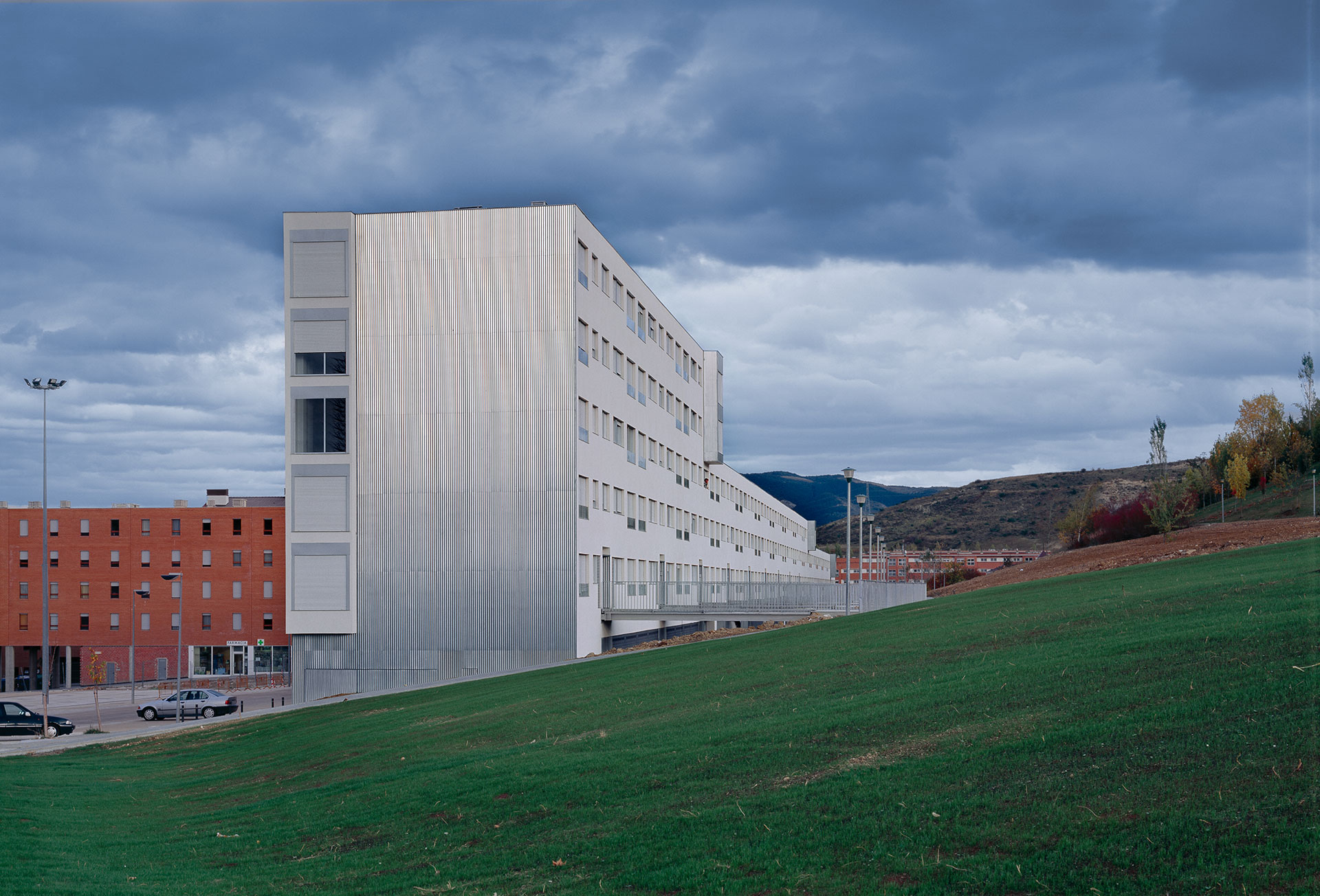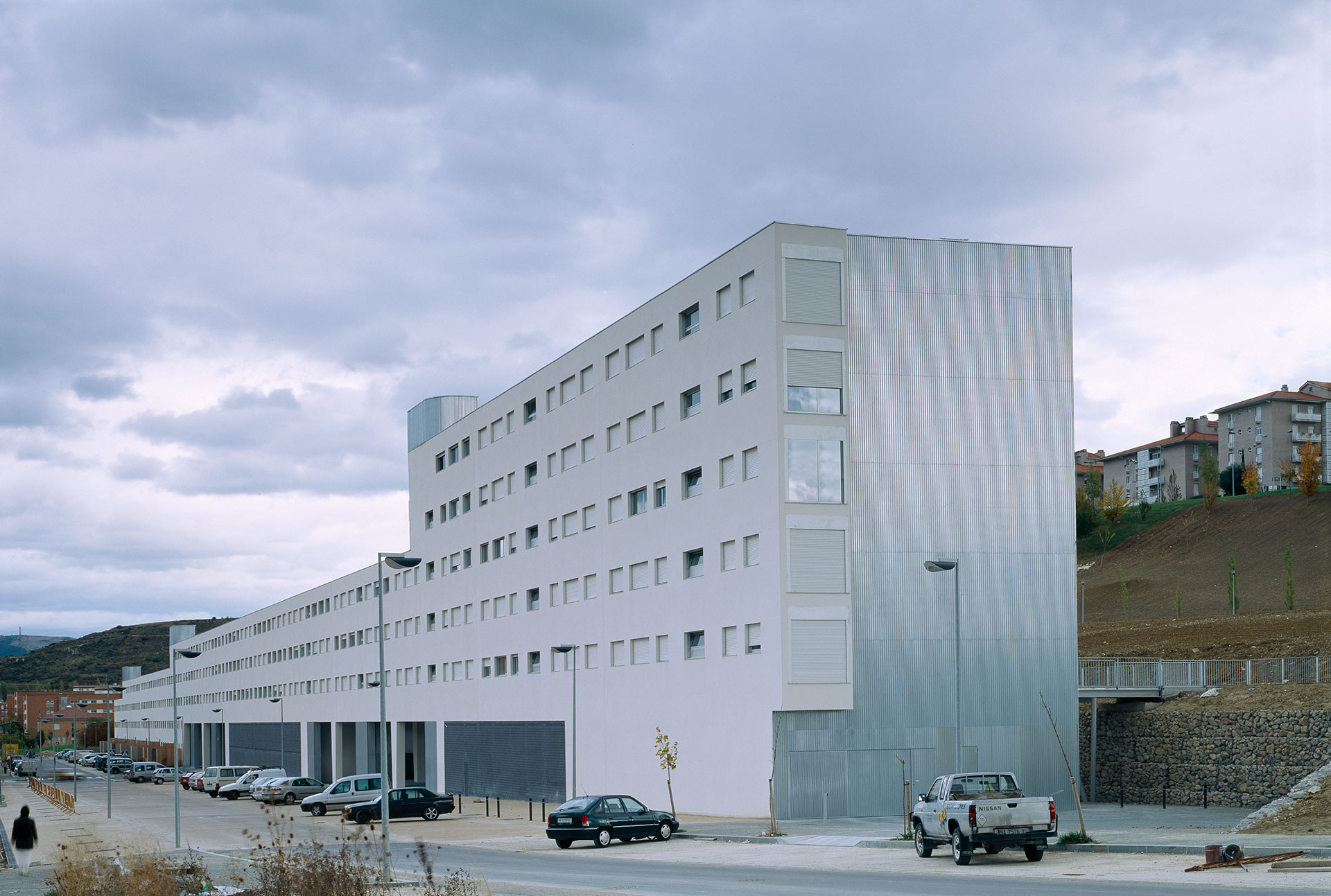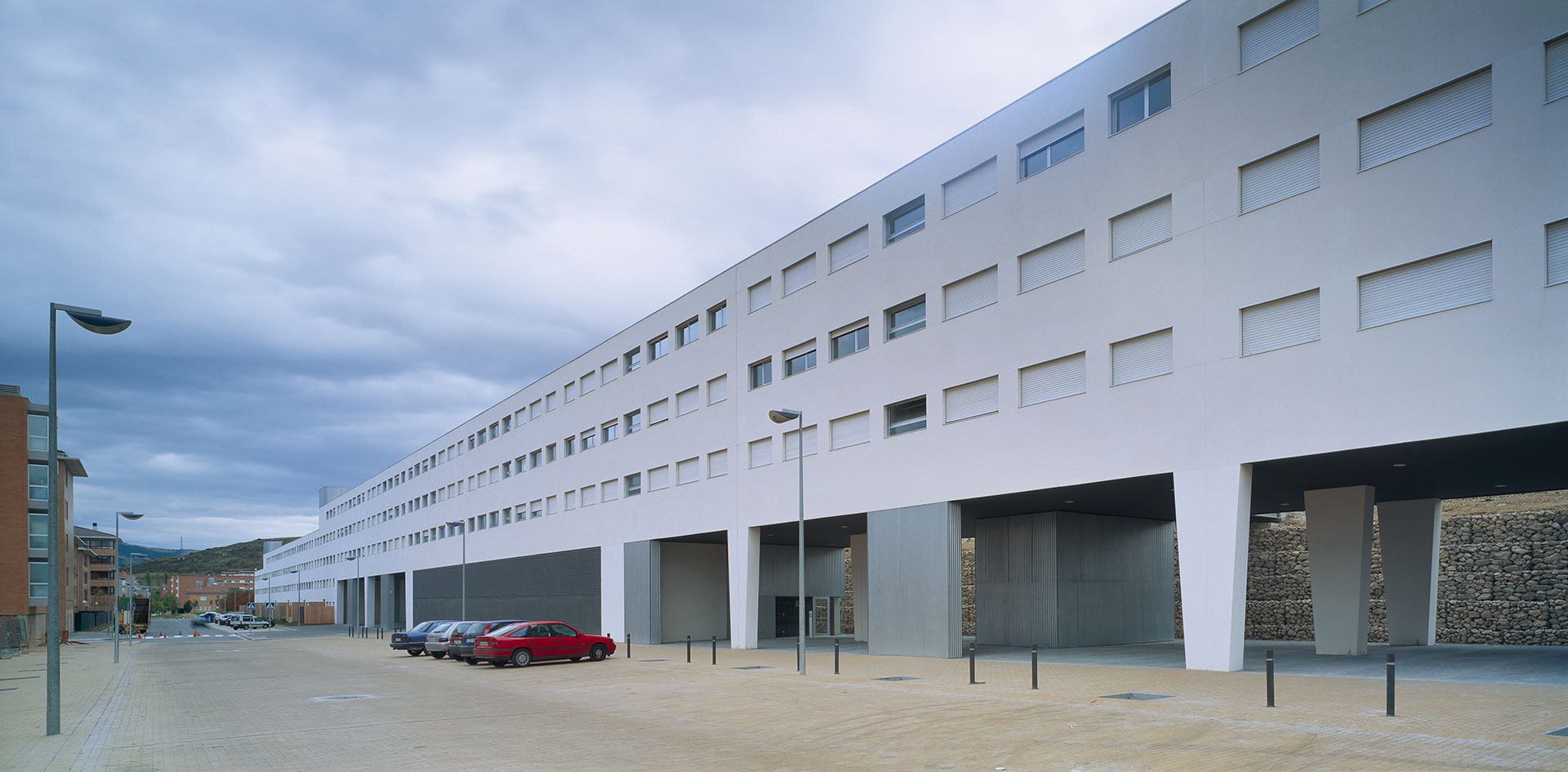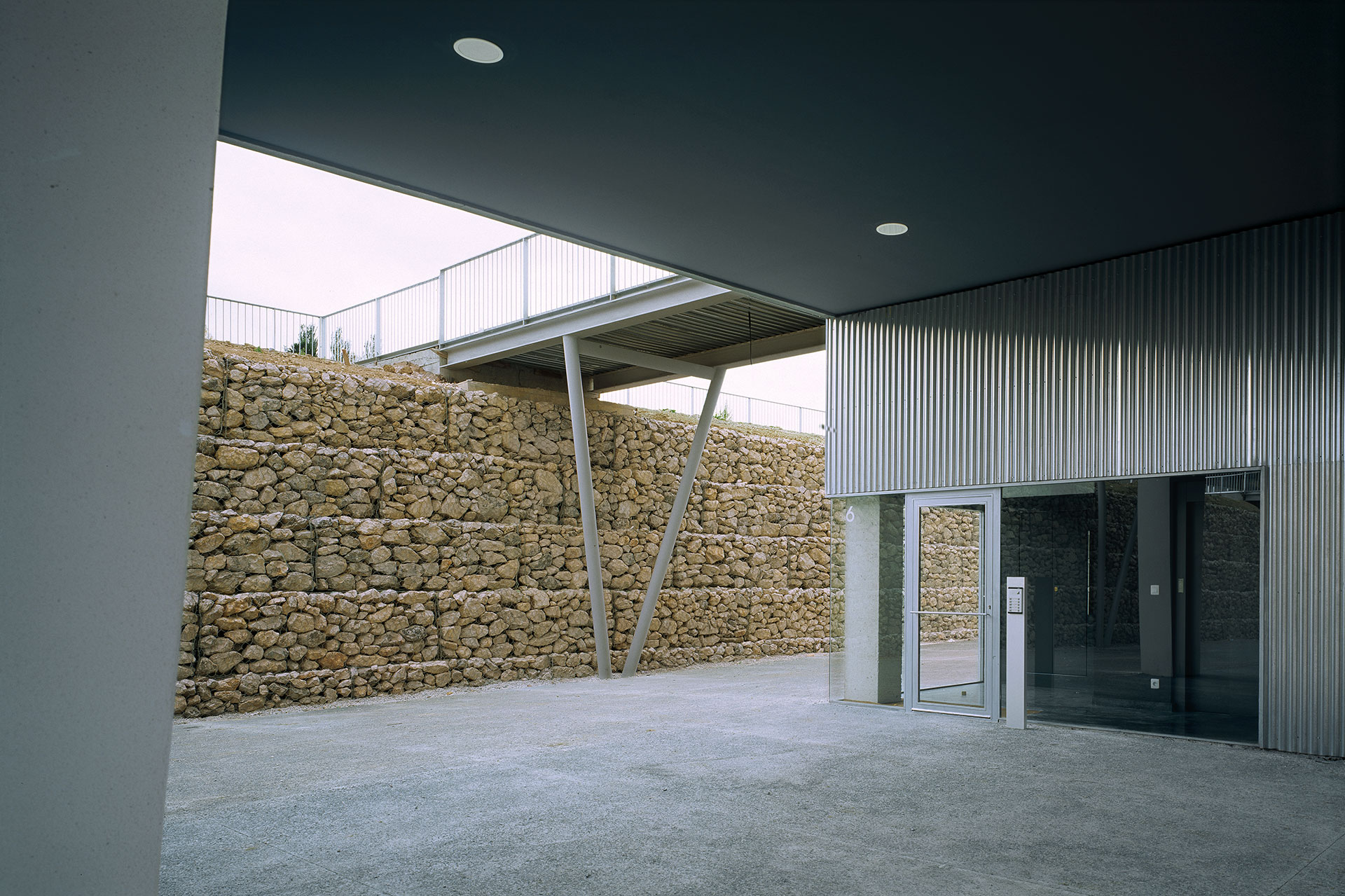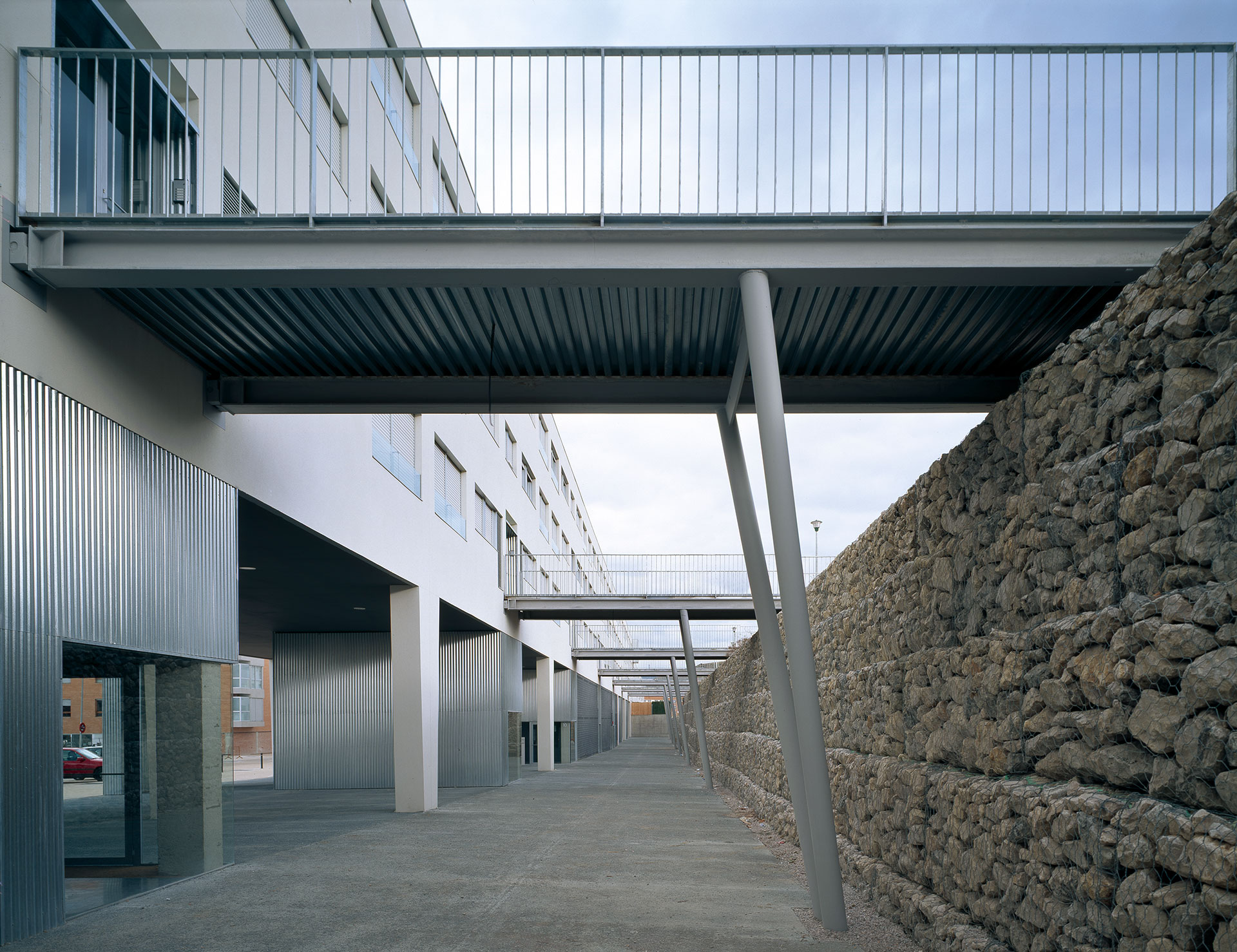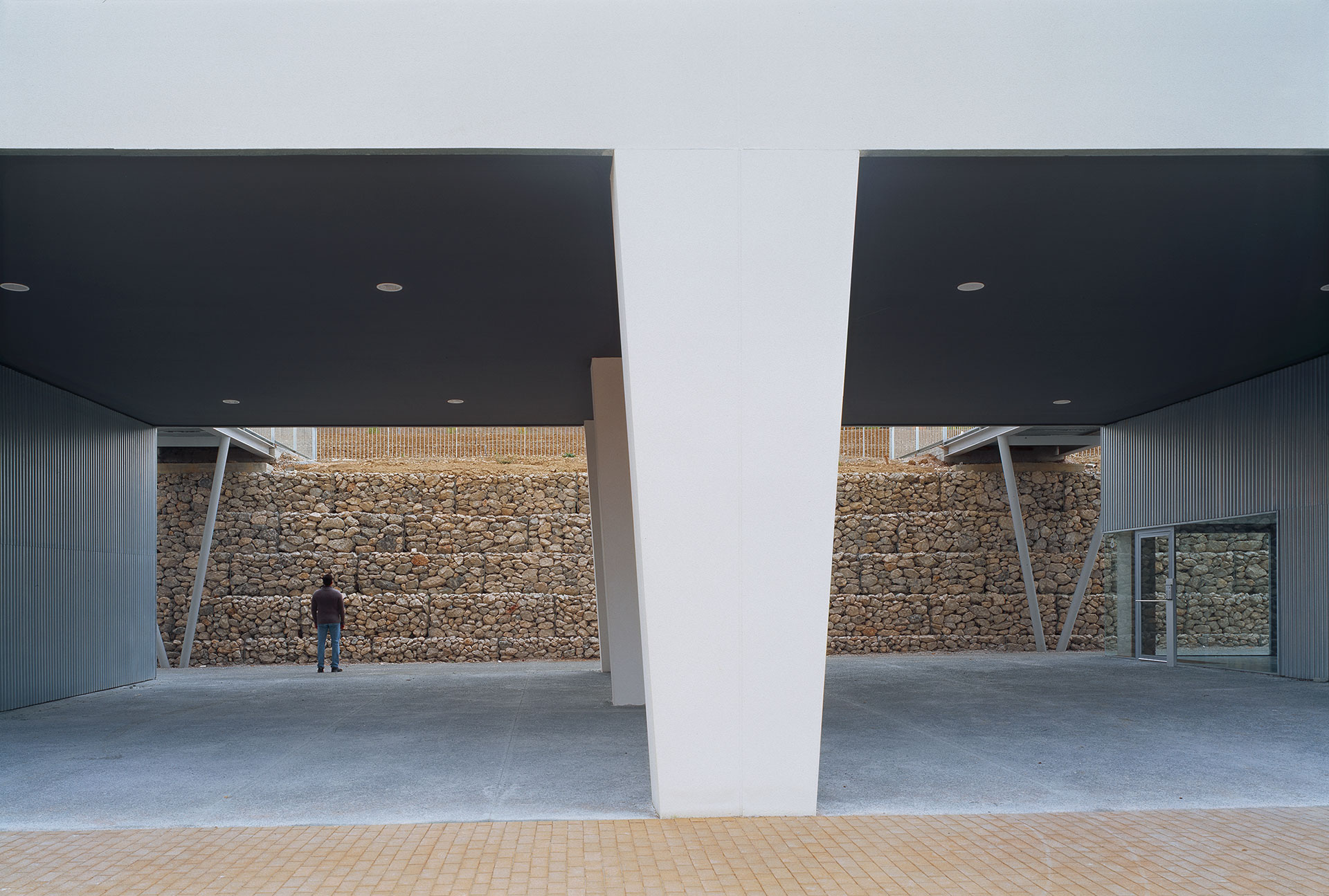113 Viviendas Sociales en Mendillorri
El edificio se localiza en Mendillorri, un área de nuevo crecimiento en el entorno inmediato de Pamplona. Se trata de un área, dedicada fundamentalmente a vivienda social, de baja densidad y gran cantidad de espacios verdes. Las condiciones de la topografía y la forma de la parcela, alargada, en el límite entre un parque de grandes dimensiones y un área edificada, son las peculiaridades esenciales del proyecto y en gran medida las razones de la propuesta.
Así, en un primer tramo el edificio queda abierto a uno de los lugares públicos, “plaza”, más importantes y espaciosos del conjunto urbano de Mendillorri. En un tramo intermedio pasa a conformar la calle para, en su parte final, albergar tipos de vivienda con jardín en planta baja. Distintas condiciones urbanas y tipológicas a las que se propone una respuesta específica a partir de una misma unidad arquitectónica.
La dualidad de la orientación que permite que el edificio disfrute del parque y de la gran plaza y calle de acceso a Mendillorri condicionan también la solución. Todo el edificio puede entenderse como un límite, una frontera, una línea de unión, entre el parque y lo construido. Las plantas bajas resultan significativas en este sentido.
Cuando quedan abiertas formando grandes porches resultan ser “puertas” entre uno y otro, estableciendo una continuidad visual y física entre los espacios públicos del área edificada, plaza y calle, y la topografía del parque. La calle posterior al edificio, generada a partir de un brusco corte topográfico con la tierra y materializada con gaviones de piedra rugosos, se estructura en continuidad con la superficie pavimentada de la plaza y la calle, permitiendo un acceso fácil a las laderas ajardinadas del parque y a los propios portales de las viviendas. Se proponen dos niveles de acceso a los edificios. Desde el propio parque mediante puentes que libran el desnivel existente y que contribuyen a caracterizar el “paisaje” construido en este lado, o bien, directamente desde la calle en el nivel más bajo del edificio.
Ciudad
Mendillorri, Pamplona. Navarra
País
España
